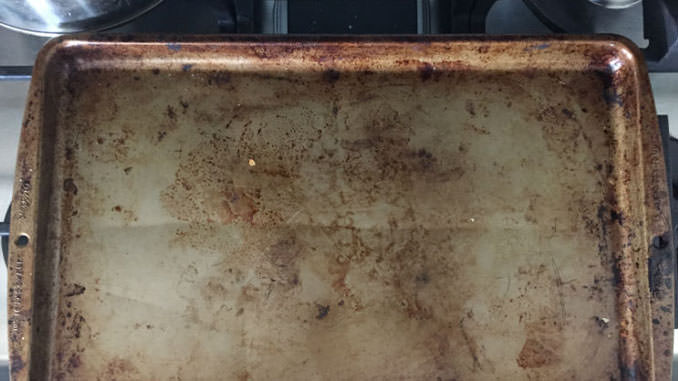
Rust is a compound that occurs when heavy metals (especially iron and steel) come into direct contact with the water and oxygen contained in the air. It is an unsightly and harmful effect: a reddish patina is created that can ruin precious kitchen batteries, precious antiques, and any object with ferrous surfaces.
In this regard, in this guide’s subsequent steps, I will illustrate some useful tips for cleaning and treating an iron pan using materials that are easy to find and at a relatively low cost.
As well as not releasing harmful elements into prepared food and being disposable without causing any damage to the environment, the iron pan has a low purchase cost, lasts many years, and is not subject to easy wear (non-stick Teflon trays, example, you need to change them at least every two years). Read on to find out how to remove rust stains in a few simple steps!
The first working ingredient is distilled white vinegar: immerse the pan is highly concentrated water and vinegar and leave it to soak for about 24 hours, depending on the rust stains’ extent.
After the necessary time, recover the object. With the help of a scouring pad, a sponge, or aluminum foil, insist on the corroded areas that remain until the complete dissolution. If the object to be treated is large enough, you can use a sprayer, wet the rust with vinegar, and then dry with a clean cloth.
Another natural system uses citric acid (or lemon juice), perfect for loosening the most stubborn stains of rust from the pan. Collect everything you need: a coffee spoon (measuring spoon), fine salt, fresh lemon juice (the ready-made juice in the bottles sold at the supermarket is also excellent), a bowl, a toothbrush, a clean sponge, and a soft cloth.
Now, mix in the container, using the measuring spoon, 3 parts of salt, and one part of lemon juice. Mix the two ingredients until you create a homogeneous paste applied on the pan to be restored.
Let the cleaning solution act on the surface for about 30 minutes, after which you will remove the cream with a slightly damp sponge, applying light pressure. Once the mixture and rust have been removed, wipe a clean and dry cloth on the wet surface so that the pan is perfectly free of humidity.
If the previous methods have not been sufficient to remove the oxide spots from the pan’s surface, proceed in this way. Prepare a mixture consisting of 50% water and 50% sodium bicarbonate.
Start by mixing a spoonful of baking soda with one of the water in a small bowl; if necessary, increase the doses, but remember that the cleaning solution must be dense enough to adhere to the layer of rust.
Distribute the mixture using a damp and clean cloth. Apply it so that it adheres to the corroded surface and let it act for a couple of hours; allow the dough enough time to fix on the object’s surface.
Rub the baking soda away, then use steel wool or a brush with metal bristles and vigorously rub the cream on the affected area until no trace remains; if necessary, repeat the procedure several times to completely remove rust from the metal.